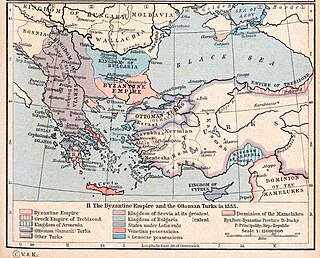
The History of the Serbs spans from the Early Middle Ages to present. Serbs, a South Slavic people, traditionally live mainly in Serbia, Montenegro, Bosnia and Herzegovina, Croatia and North Macedonia. A Serbian diaspora dispersed people of Serb descent to Western Europe, North America and Australia.
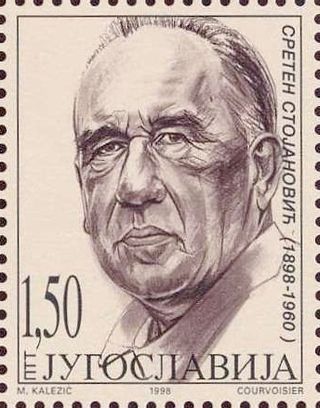
Sreten Stojanović was a Serbian sculptor and art critic. His artistic individuality was best observed in portraits made of various materials.
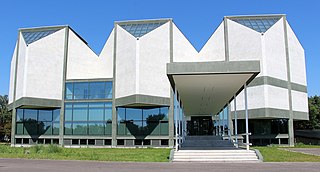
The Museum of Contemporary Art is an art museum located in Belgrade, Serbia. It was founded in 1958 as the Modern Gallery, making if one the first museums of this type in the world. It was moved into the current building in the Ušće neighborhood of New Belgrade in 1965. The building is a masterpiece of architects Ivan Antić and Ivanka Raspopović, a short-lived but highly successful partnership, which also produced the 21 October Museum in Šumarice Memorial Park in Kragujevac. The collection contains more than 35,000 works of art.
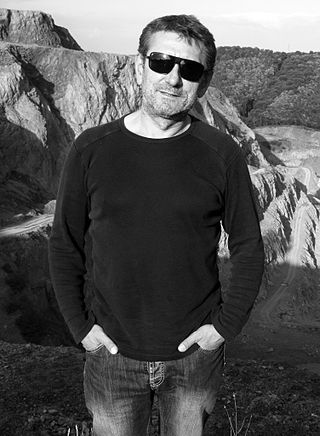
Slobodan Peladić was a Serbian painter, sculptor and multimedia artist.
Venia Bechrakis is a visual artist who lives and works in Athens and New York City.

Jovan Despotović is a Serbian art historian and art critic who lives in Belgrade.
Tafil Musović is a painter who lives and works in Amsterdam, Netherlands, since 1988. He was born in Yugoslavia, in the province of Kosovo, and lived in Belgrade, the capital, from 1952. In his last years in Yugoslavia, he had an atelier in Zemun until 1988.

Jovanka Stanojević is a Serbian painter.

Stevan Kragujević was a Serbian photojournalist and art photographer.
Obilićev Venac, a pedestrian and shopping zone, is located in the city center of Belgrade, Serbia, within the Knez Mihailova Street spatial unit protected by law, and contains a number of residential and office buildings dating from 1900 to 2000.

Ivanka "Ida" Ćirić was a notable Serbian illustrator for children.
Bojana Barltrop is an artist and photographer. Barltrop's process-based body of work and research investigate the relationship between desire and politics through the lenses of the performative body and the architectural space.
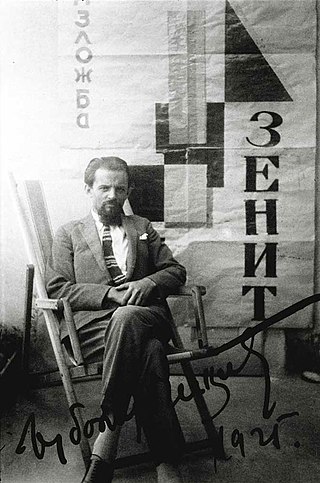
Ljubomir Micić was a Serbian poet, writer, critic, editor and actor. He was the founder of the avant-garde movement Zenitism and its magazine Zenit. Both he and his brother, Branko Ve Poljanski became prominent avant-garde artists.
Ana Vidjen is a Yugoslav, Croatian and Serbian sculptor. She obtained her MA in sculpture in 1962 at Athens School of Fine Arts, and was encouraged in her chosen field by the Greek feminist poet and writer Eleni Vakalo as well as the painter Milo Milunovic, who founded the Academy of Fine Arts in 1937. Her work includes sculptures in stone, wood and bronze, drawings, paintings and ceramics.
Vasa Pomorišac was a Serbian artist and professor at the Academy of Applied Arts in Belgrade. He worked as a painter, stained glass window maker, etcher, printmaker and he was also an art critic. He is considered an expressionist painter in the same category as his contemporaries Mihajlo Petrov, Ivan Radović, Petar Dobrović, and Jovan Bijelić.
Oto Logo was Serbian sculptor and painter.
Dušan Jovanović Đukin also spelled Dušan Jovanović Đukin was a Serbian academic sculptor trained in Paris. Cubism was his speciality.

Mirjana Lehner Dragić is a Serbian painter.











